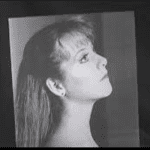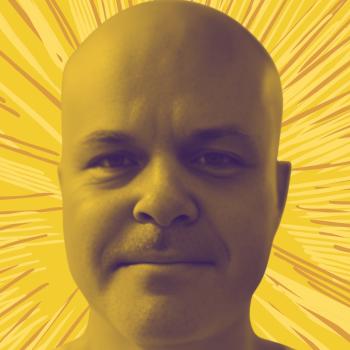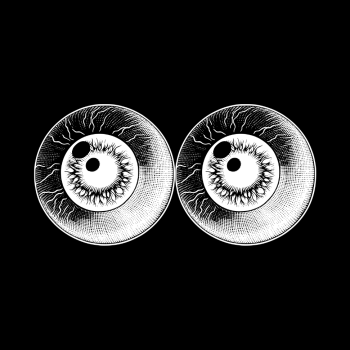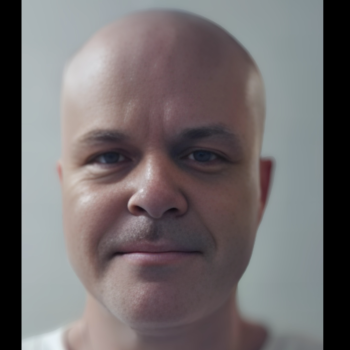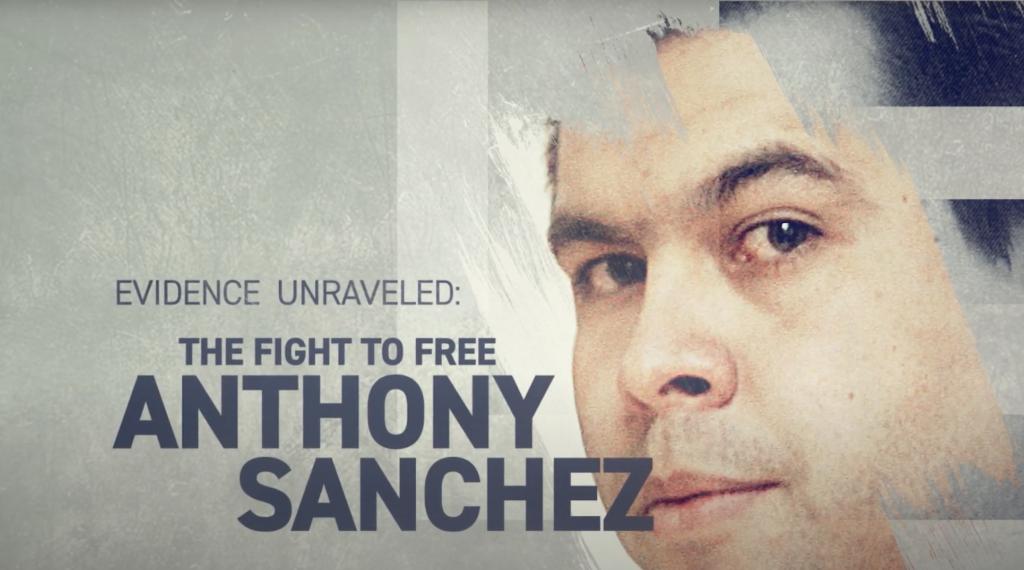
Rev. Dr. Jeff Hood:
On December the 20th, 1996, Juli Busken was abducted from her apartment complex, driven out to Lake Stanley Draper and executed, murdered on the shore. For years, authorities had very little evidence and no suspects to go on. They found a traced amount of DNA on a leotard that was found close to the body of Juli Busken. Using that trace amount they claim to, six or seven years later, get a random match on Anthony Sanchez. Anthony Sanchez was tried, convicted and sentenced to death based on that trace amount of DNA.
Cathy Hodge:
It seems like the prosecutors, I mean, they just made up a story. I don’t know where they got it from. They wouldn’t let none of his family come in the trial. He had to sit there by himself.
Rev. Dr. Jeff Hood:
What was Anthony like growing up?
Cathy Hodge:
He was a happy kid. He had a smile on his face all the time. I mean, he had the biggest grin. If you look at any of his pictures, he’s got this big grin and he was real loving. He’s real soft-hearted from a baby on, I mean, he was a good kid.
Rev. Dr. Jeff Hood:
When he got a death sentence, what was your reaction? What was that like?
Cathy Hodge:
It was the worst day of my life and there’s nothing you can do. As a mother you want to help him and save him, and it was bad. It was just heartbreaking. He had an attorney that, a real hateful attorney, I tried to tell him, “You need to defend him.” And he said, “Well, we’re not trying to get him out right now. We’re just trying to keep him off death row. Well, why would you not bring up the evidence that’s going to prove his innocence instead of just trying to get him off death row?”
Rev. Dr. Jeff Hood:
So you feel like in the midst of the entire trial and the entire process, there was nobody defending Anthony?
Cathy Hodge:
Nobody.
Rev. Dr. Jeff Hood:
When I met Anthony Sanchez last fall, I sat down with him and he began to talk to me about innocence and I didn’t really know what to think because I hear about innocence from these guys a lot.
Abraham Bonowitz:
At Death Penalty Action, we take every case in order. I mean, we address every single execution whether they’re guilty or innocent. So this one sort of came onto our radar as one of the 25 in Oklahoma, but when Jeff came and said, “This guy says he’s innocent, I think he’s full of it.” I said, “Great, we’ll just do what we usually do.”
Rev. Dr. Jeff Hood:
But as I kind of pushed more and more into this case, again, it started becoming stranger and stranger as to how this was pinpointed to be Anthony.
Abraham Bonowitz:
But then Jeff came back and said, “I think he’s innocent and we need money for testing and an investigator and all this.” I didn’t know what that was going to take, but I sent a text to one of my best and longest donors and within half an hour she wrote back and said yes. And that’s what allowed us to get to the point that we’re at today where there’s an independent investigator who’s putting his jobs with the state on the line to come out and counter the narrative of the state.
David Ballard:
My name is David Ballard. I’m a chief licensed private investigator. I am also an expert witness and an instructor on courses approved for investigators and law enforcement. For the last 11 years, I’ve worked as a private investigator on crime scenes and on evidence and forensics, ballistics. Pretty much my expertise was anything violent crime. Back in December of ’22, I was contacted by one of the attorneys for Anthony Sanchez, needed someone who was familiar with DNA and crime scenes, follow up on some evidence and try to reach out and find other DNA evidence and have it tested. Well, initially when I got some of the documentation or some interviews and the sketches, the first impression was the sketch that nothing about the sketch appeared to match Anthony.
Then went through some of the witness statements and very quickly had to move to trying to locate an item with DNA for his dad, Glen Sanchez. So involved reaching out to Charlotte, his ex and start from there. But when I met with her, she was very open and talked to me and was very forthcoming with information. And then I told her that I had been informed that at some point she may have heard a confession or a statement. And it turned out to be three different incidents where Glen Sanchez had confessed, he had killed Juli Busken, that he should have done a better job getting rid of her and that Anthony was taking it like a man.
Charlotte Beattie:
It was probably about 2014, he said, “At least Anthony’s taking it for me.” He said, “I’m the one that did it.” And he said that she had a tight ass, and he kept on bragging about it because he said, “No one will ever know.” It seemed like every few months he’d talk about it. And I’d ask him, “Why are you letting Anthony suffer for it?” And he said, “Well, because he can handle it.” And he said, “Anthony doesn’t know. Whenever I die, no one will know the truth about what happened to Juli.”
Rev. Dr. Jeff Hood:
Did Glen ever give any sort of details or anything like that when he was making these types of comments?
Charlotte Beattie:
No. He would turn around saying how he… that he tied her up. He hog tied her and he said he raped her.
David Ballard:
But as I was interviewing Charlotte, she was the first one to tell me that one of the reasons Anthony didn’t finish school was because Glen would beat on him so bad. Sometimes he was just too beat up to go to school that he put hands on her, he would literally just go off blackout and become very violent. So now you’ve got the, okay, he’s a propensity towards… a potential for violence towards women and other people. But sometimes you like, “Well, that’s inner family.” Not that it makes it better, but where you go from there. It was once you started talking about his sexual behavior too, that really stood out. Aggressive when told no, had issues with performance and blamed it on women a lot of times, making them do things face down, didn’t want them looking at him. Including trying to force women to have sex with animals, sodomizing them with handles to hammers, waking up and being bound and him assaulting them.
Charlotte Beattie:
The abuse grew with time. It was sexual abuse. He figured if a baby could come out of it, a fist can go in it. And if I screamed, he would go further and he’d go in my butt too. And I was afraid to say something because he’d always say, “If you say anything, if I don’t do it, somebody else will. I’ll kill you.” I’d come out of the room crying or something, or I’ll flip out on my kids over him. “Why don’t you get rid of them?” “Well, I was afraid to.” I got where I was scared myself that, are you going to harm my kids? Are you going to try to harm me?
David Ballard:
I mean, you take that piece and then you add in the fact of according to Charlotte, and then Glen’s own words to the detectives. He went by Draper all the time. Matter of fact, in one of the interviews when they’re asking about Anthony, they were trying to establish if Anthony was familiar with Lake Draper. They asked Glen, “Have you ever taken Anthony fishing there?” And he said, “Yeah, when he was a kid.” He said, “Where’d you like to go?” And he tells them, “Oh, I is over there by the bridge.” And he was referring to the dam. He talks about the dirt road, the gravel… I mean off the beaten path. And the detective put in his report that he thought that was interesting because that is right next to where they found Juli Busken’s body. I believe Anthony’s first attorneys even thought might be Glen because Anthony got upset about that because at that point, no one had any inclination that way, but we’re not the only ones. The detective also was looking pretty hard at Glen but couldn’t get there at that time.
Rev. Dr. Jeff Hood:
They stuck with Anthony Sanchez because he’s a poor kid, they already had this whole narrative built up. They already were able to take the DNA and manipulate it, make it fit, and they didn’t take the time to investigate Glen Sanchez.
David Ballard:
There’s a lot that goes into any kind of forensic evidence. You have to be very careful with how you move it, package it. They started with a cowboy hat, but they got a mixed DNA sample, which also aided to what my position was on the DNA is you cannot get an exact, a hundred percent single profile when you have mixed DNA because you can’t always separate the two. And you can even get DNA that mask over another to where you can’t see it. They came back with a cowboy hat in February stating that it was mixed, but they could move to the toothbrush. And in March they were able to do the toothbrush and pull a single profile.
So the profile we got was a male profile, but again, this is from his hygiene kit, but you have to ask the question, making sure that it’s for sure Glen’s DNA profile. But based off what we’ve seen, the next thing was comparing it to what we had already supplied of a DNA chart that was given to me from Anthony’s legal team. And I mean, matter of fact, when I first saw that document, I think we had a meeting right after, and I had an issue as soon as I saw the first table that had all the DNA profiles. And that was because Juli Busken had matching DNA numbers in her loci that matched Anthony. And not just Anthony, but a prior person who’d been looked at as a suspect in three separate loci complete matches, which that should not happen unless you’re a relative.
In this case, the only matching numbers came from the leotard, that was interesting because that in the statements of the evidence that was found is that there was no items that did not contain mixed DNA. Matter of fact, the leotard contained what seemed like a smear of potentially fecal matter and what they believed to be spermatozoa. So that was odd to me that they, one, got a hundred percent match on any item, especially since some of the other items, underwear, things like that, did not have those kind of matches. And you would assume the underwear she was wearing was going to have a lot more of a match to it than anything else.
Rev. Dr. Jeff Hood:
I mean, it’s interesting. You keep on hearing the state say, “Well, you’ve got to trust the DNA. The DNA is going to show us the truth.” And it sounds like from where you sit, your persuasion, the DNA is showing us the truth. And that is that Anthony is innocent.
David Ballard:
Yes. I mean, well, one, the DNA, the sheets that we have w ere someone generated, they’re not like the benchmarks. You get the lab notes and all the details that would be in there of how they broke it down. And the thing to remember is I believe five different technicians worked this evidence. And from ’97 when the first test was done and they were able to pull four loci on a profile to all the way until 2000 when they do a PCR and now they get, I believe, 13 loci is what they said. But as they’re going, they’re swabbing and swabbing and doing this and testing this evidence, typically, and I think I’ve given you this reference that I’ve heard before. Imagine taking a picture and put it on a copier and keep copying it, and keep copying it. You don’t get a stronger picture by doing that.
And there was a swatch cut out of the leotard that was used for testing. And with swatch two inch by two inch square that contains the most evidence. And typically you swab those, you don’t actually do it on that item. And that plays an important fact because at one stage in this case, when DNA was challenged, it was a letter that I, in receipt of now the DA’s office saying that items were consumed and we’re no longer available. And I believe we had a conversation about that and I said, “That could be a problem because you should swab every bit of it.” And they said swabs were put away in storage. Also, one of the evidence items of they that they listed that were taken, this is when Melissa Keith comes in is she said she received one large envelope and literally all the evidence was stuffed in one envelope.
Rev. Dr. Jeff Hood:
So all the swabs, everything stuffed in one envelope?
David Ballard:
Everything, one big giant envelope.
Rev. Dr. Jeff Hood:
What was going on in Oklahoma City at the Oklahoma City Lab during that time?
David Ballard:
During that time was not a really good time for Oklahoma City Crime Lab. That was during the Joyce Gilchrist days where it came out that she had altered evidence or falsified reports. And I forget how many, it was a lot, a bunch of cases drug on for a number of years of them figuring out how many cases she actually did it on. That she had either falsified evidence or just straight lied about it on the reports.
Rev. Dr. Jeff Hood:
So as you go down this DNA trail and you begin to realize that you know that there are these issues, you’ve got Melissa Keith at the trial on the stand saying this is a 100% match. I mean, how possible is a hundred percent match under normal circumstances and then how possible is a hundred percent match under these circumstances?
David Ballard:
So a hundred percent match is, I mean, you’re going to be… I’ll put a swab in your mouth, take it out, and it gets packaged right or directed right there at the lab. Then you’re going to get a very clean match. But from a crime scene with mixed DNA, and then eight years later after it’s been handled how many times, I mean your chances of success on a hundred percent match are going to get real slim. I’ve only received partial at this point because of what relayed to it was Melissa Keith’s testimony at the trial. And initially she talks about how the match works and all this, but when she gets pressed on, and I believe it’s in the transcript, that’s where she states that, “Well…” And I’m paraphrasing a little bit, but basically she didn’t get a full match, but based off her knowledge and training, she felt like it was good enough or a strong enough match.
Rev. Dr. Jeff Hood:
Greetings, this is Reverend Dr. Jeff Hood, spiritual advisor for Anthony Sanchez. I’m joined by David Ballard, who is the investigator on the case. In this video, we want to talk about why a shoe print that they cited is erroneous and should have never been included as evidence.
David Ballard:
Yeah, as you said, Jeff, there was a shoe print that was found at the scene and then it was stated that it matched potentially a shoe print of a style and type of shoe that Anthony Sanchez may have owned at one time. However, again, you’re talking about a mass-produced shoe. And even if you go with that and say that, “Yes, Anthony could have owned this type of shoe.” The problem is that it was a size nine shoe. And Anthony Sanchez, even at the time when he was just nine months past being 18 years old, that didn’t match his shoe size at that time anyway. And I believe the reference to his shoe was something from much earlier on in his life, which was a very common shoe type. And you also have to go back to… There’s been a lot of developments in processes and crime scenes and a lot of these techniques, they can be supportive, but they’re not absolute.
The questions I have for this case are one, the DNA, the lab notes, the collection process, chain of custody, there’s a lot of documentation missing. Two would be any kind of photographs or anything of how the packaging of the evidence was. Next would be the likelihood of getting it retested, because that’s the best way to answer the question. Retest the evidence, compare it all now and see what we have. The fingerprints, if you didn’t get Anthony’s can compare him to Glen’s, compare Glen’s DNA. At least it’ll be ruled out because what if it isn’t Glen? I mean, there’s always that chance. I mean, a fingerprint from Glen Sanchez on her car would be huge because there should be no reason whatsoever his fingerprints should be there.
What about the pajama bottoms? What about the other underwear that are all in her car and not readily accessible? But all those came back nothing to Anthony, and they said they found all kind of DNA evidence on that stuff. So where are those profiles? Instead of trying to make the evidence match, Anthony, let the evidence tell you what it’s trying to tell you. One of my requests would be for them to test Glen Sanchez against CODIS because one of Glenn’s own family members stated that they actually turned him in on another case because they saw a sketch that they thought resembled him. And it was a woman who was assaulted and murdered, not far from Norman.
Rev. Dr. Jeff Hood:
So there is suspicion out there that Glen Sanchez could have been a serial killer.
David Ballard:
It’s what, as I understand it. We have evidence right now in the possession of the state that could exonerate Anthony Sanchez, and not just exonerate him, but potentially give us the suspect, the person responsible. And if we have that capability and we have the evidence, why in the world would we not do it?
Rev. Dr. Jeff Hood:
Do you think that there is any way possible that Anthony could be guilty of the murder of Juli Busken?
Charlotte Beattie:
No, he was a… well, what’d you call it? Like a sweetheart, just a lovable kid.
Rev. Dr. Jeff Hood:
We want to know the truth. We know that Anthony Sanchez did not do this. The evidence is clear. But even if you still believe that he did do this, shouldn’t it be investigated on a much deeper level where all of these questions that we are bringing up just aren’t left out there? You see, if Anthony Sanchez is executed, the truth will be executed, the questions will remain and the truth will be executed. So we are asking you to stand with us to give life to the truth, to give life to a deeper investigation, and to give life to the memory of Juli Busken.
Abraham Bonowitz:
So I’m a Abe Bonowitz with Death Penalty Action, and we operate hand to mouth, but what we have is massive impact. And it’s because of people who support the work, who make a donation, go to deathpenaltyaction.org and donate, that we’re able to do this work. So I’m asking you today if you value what we’re trying to do, and if you are able to please chip in whatever you can. If it’s five bucks or $5 million bucks, you give it to us, we will use it to create change and to stop executions.


